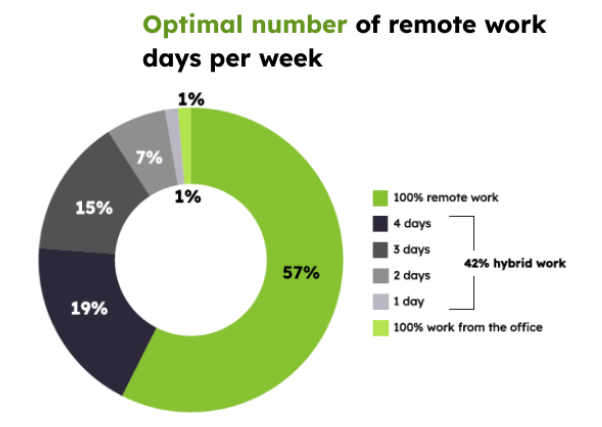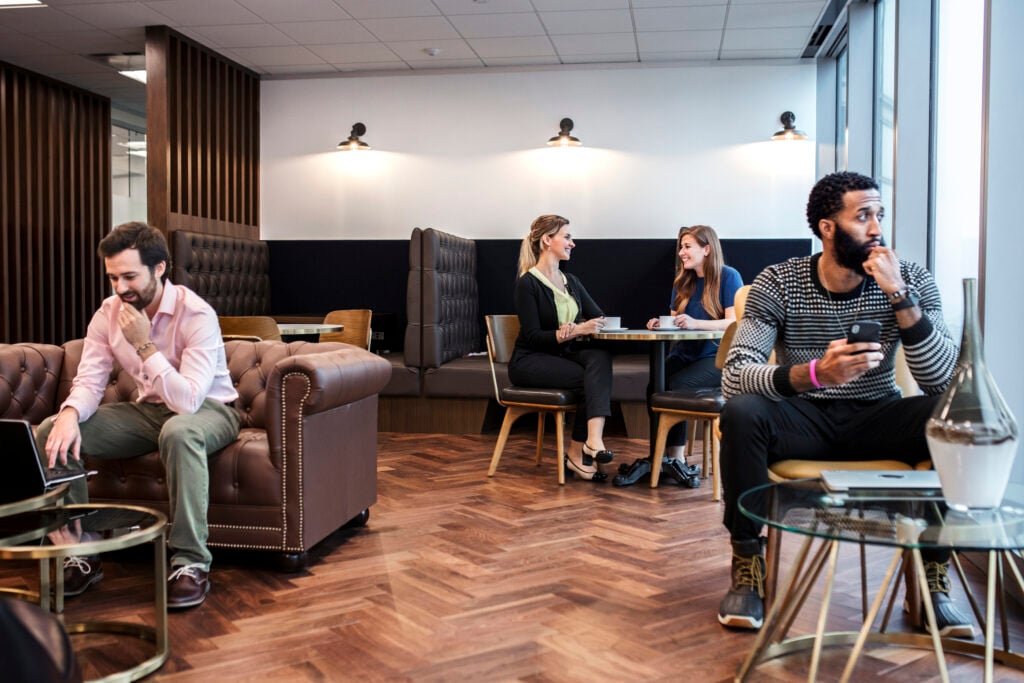Virtual offices have been revolutionary for remote workers.
It’s given businesses the professionalism and resources they need to operate at minimal risks and costs. But as with everything, there are drawbacks.
Working remotely cuts off many core fundamentals that build the foundational structure of a business. Lack of team culture, minimal collaboration opportunities, isolation, distractions and difficulties in career growth are just some of the disadvantages of remote work.
And while a virtual office bridges the gap on a professional front, there is still room for improvement. Let’s delve into the disadvantages of a virtual office and remote working, along with solutions that you can implement.
Isolated employees
In the beginning, work-life balance and motivation is above average.
Tasks are being completed ahead of time, and energy levels are higher thanks to no commute. But over time, the lack of social interaction with colleagues can lead to loneliness and the direct correlation to job satisfaction will be apparent.
Humans are inherently social creatures and video calls don’t fulfill this need, if anything it creates more exhaustion. Missing out on spontaneous conversations and impromptu collaborations can be a significant drawback in fostering a sense of belonging in the workplace.
Detachment from colleagues and lack of non-verbal cues can quickly make you dread your job or worse, create mental health issues.
86% of employees who work from home full-time experience burnout.
Zippia
Work plays a large role in many people’s lives and consistently feeling disconnected from it can lead to a decline in mental wellbeing.
Is getting up from bed, walking to the computer and staying home all day everything it’s been sought out to be?
Career growth issues
Networking in the office and in-person chats with your manager play a strong role in career growth. However, remote employees have limited opportunities to demonstrate their ability to go above and beyond.
When communication is minimal or only restricted to the completion of tasks, there’s very little room for employees to display excellence. Teams that work in a physical office space have many chances to strike up a conversation with managers or other coworkers to respectfully but confidently talk about recent work achievements.
And now that there are record high side hustles amongst the workforce, it could be fair to question, ‘How likely are employees to continue working after completing their tasks if there are still hours left on the clock?”
Regardless of working hours remaining, employees could consider working on their side hustle during business time because they simply can! It might not be an issue for some companies or specific roles, but workers may limit career opportunities because of remote conditions.
Managers need to encourage their teams to pursue excellence and not just ‘do their job’. And it’s conversations as these that have led to debates of remote workers facing pay cuts.
Can this be accomplished from a fully remote setting? It would seem unlikely and is a significant factor in the list for disadvantages of a virtual office.
Distractions
Electronics, family and the kitchen.
Some are better than others, but many remote workers quickly fall to the number of distractions in a home environment. What was a ten-minute chat with Mum turns into 30 minutes after looking on social media and finding snacks in the kitchen.

But that’s not to say it’s bad to do these things. Sometimes, a small break in between can give the brain some much-needed breathing room and help employees stay more focused.
It all depends on the frequency of getting up from your desk, but ultimately, it’s more common for remote workers to get distracted.
The unpreferred option
Remote work is the most favourite work model, right?
Surprisingly, working remotely full-time is not preferred by most people. Research shows that 57% of people would rather always work from the office than permanently be remote. Statistically, this indicates your team won’t prefer working from home always, even if they’re more connected with a virtual office.

Time management
Some individuals are great with time management skills and possess the capacity to maintain them regardless of their environment.
But many workers can’t.
The level of autonomy in a remote setting is as high as it gets and demands decision-making skills to ensure productivity. The need for greater accountability also becomes a factor when working remotely with a virtual office because complacency can quickly be the downfall for many.
Unable to switch off
Turning your brain off from work is important.
When the clock hits your final minute of work and you log off from the laptop, the same action must happen mentally. But unfortunately, this is more difficult when working remotely.
Surveys have found that 70% of remote workers were doing tasks outside their set hours. The inability to disconnect from remote work is largely because it happens in the same environment as where we relax – home.
For example, when you clock off from the office and commute back home, the moment you take a seat there’s a feeling of relaxation. The day is over and you’re away from everything that symbolizes work.
But if home is a place of comfort and work, how can people switch off? A change in the physical environment is needed to support the mental ‘switch off’ action.
Lack of meeting spaces
Although dependent on the virtual office provider selected, some remote workers might not have meeting rooms or office space to use when meeting clients.
Meeting prospective clients at home or a cafe is a poor idea in terms of professionalism and especially privacy. But this challenge can be tackled by selecting a virtual office provider with many amenities such as meeting rooms and access to office space.
The solution is a mix
Luckily, there is a solution to combat the disadvantages of a virtual office.
And the answer is virtual coworking.
Businesses often choose virtual offices for remote work, lack of capital, or not needing a physical office in their current stage.
But virtual coworking gives businesses the much-loved hybrid solution without additional costs. For example, Servcorp’s virtual office includes up to 60 monthly hours of free coworking space use.
Having the option of entering a professional environment that includes privacy and secure technology while balancing it with home is an ideal combination. Businesses can further optimize their operations by having a hybrid and remote teams policy in place, which will ensure teams are following a structure in unison.
Read our guide on what is a virtual office and how to setup a virtual office.










